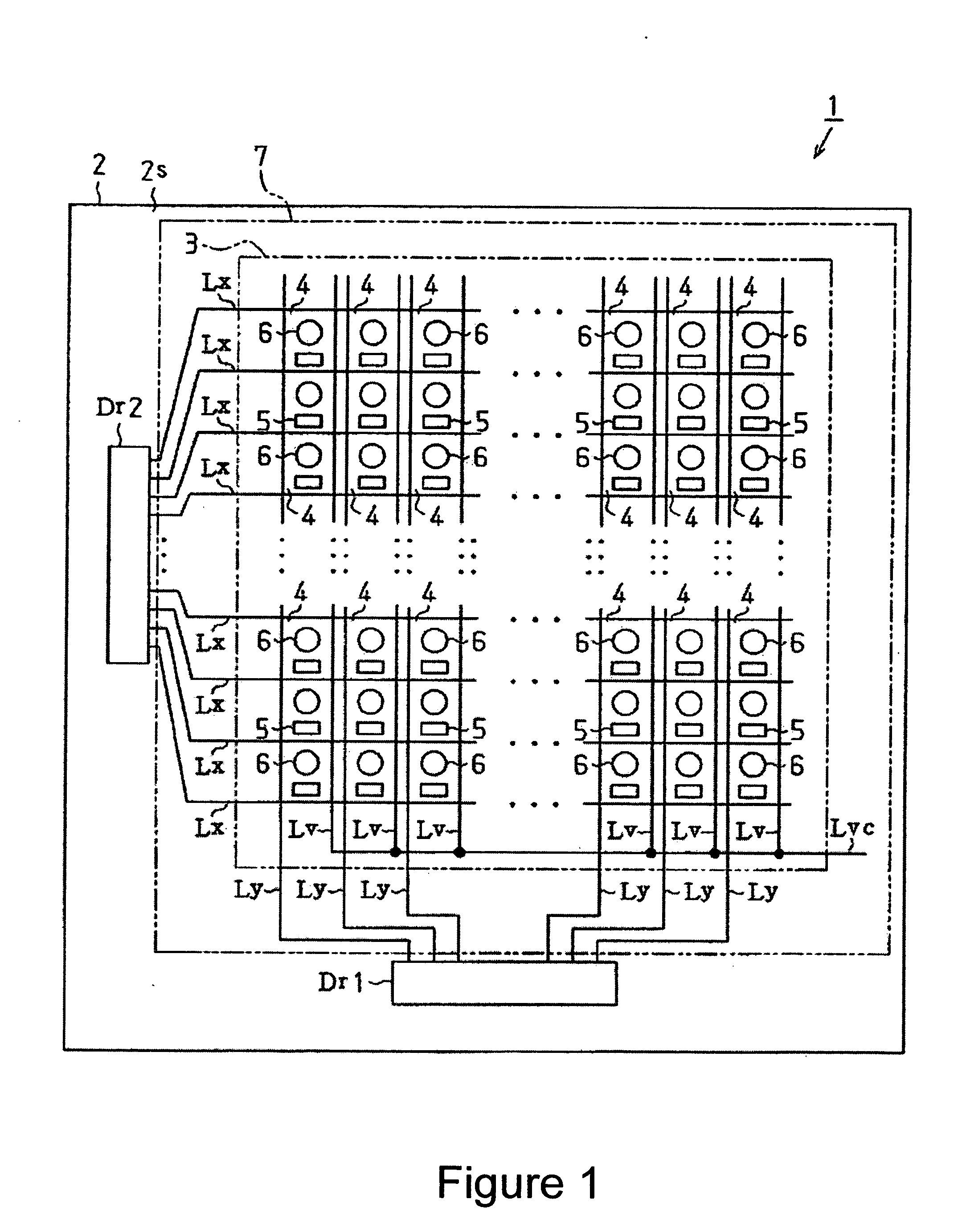Pattern formation method, method for manufacturing color filter, color filter, method for manufacturing electro-optical device, and electro-optical device
a pattern formation and pattern technology, applied in the field of pattern formation, can solve the problems of droplets not spreading out and wetting the entire pattern formation region, droplets leaking into adjacent pattern formation regions, and variance in shape (pattern shape), so as to improve the uniformity of pattern shape and reduce the probability of insufficient wetting by droplets. , the effect of reducing the probability of insufficient wetting
- Summary
- Abstract
- Description
- Claims
- Application Information
AI Technical Summary
Benefits of technology
Problems solved by technology
Method used
Image
Examples
Embodiment Construction
[0046] Embodiments of the present invention will now be described through reference to FIGS. 1 to 9. FIG. 1 is a simplified plan view of an organic electroluminescence display (organic EL display) that serves as an electro-optical device.
[0047] As shown in FIG. 1, an organic EL display 1 is equipped with a transparent substrate 2. The transparent substrate 11 is a non-alkaline glass substrate formed in the shape of a square, and a square element formation region 3 is formed on one side surface thereof (element formation side 2s (the pattern formation side), which is the front side in FIG. 1).
[0048] In this element formation region 3, a plurality of data lines Ly are formed at a specific spacing and extending in the vertical direction (column direction). The data lines Ly are electrically connected to a data line drive circuit Dr1 disposed on the lower side of the transparent substrate 2. The data line drive circuit Dr1 produces a data signal on the basis of display data supplied f...
PUM
 Login to View More
Login to View More Abstract
Description
Claims
Application Information
 Login to View More
Login to View More - R&D
- Intellectual Property
- Life Sciences
- Materials
- Tech Scout
- Unparalleled Data Quality
- Higher Quality Content
- 60% Fewer Hallucinations
Browse by: Latest US Patents, China's latest patents, Technical Efficacy Thesaurus, Application Domain, Technology Topic, Popular Technical Reports.
© 2025 PatSnap. All rights reserved.Legal|Privacy policy|Modern Slavery Act Transparency Statement|Sitemap|About US| Contact US: help@patsnap.com



